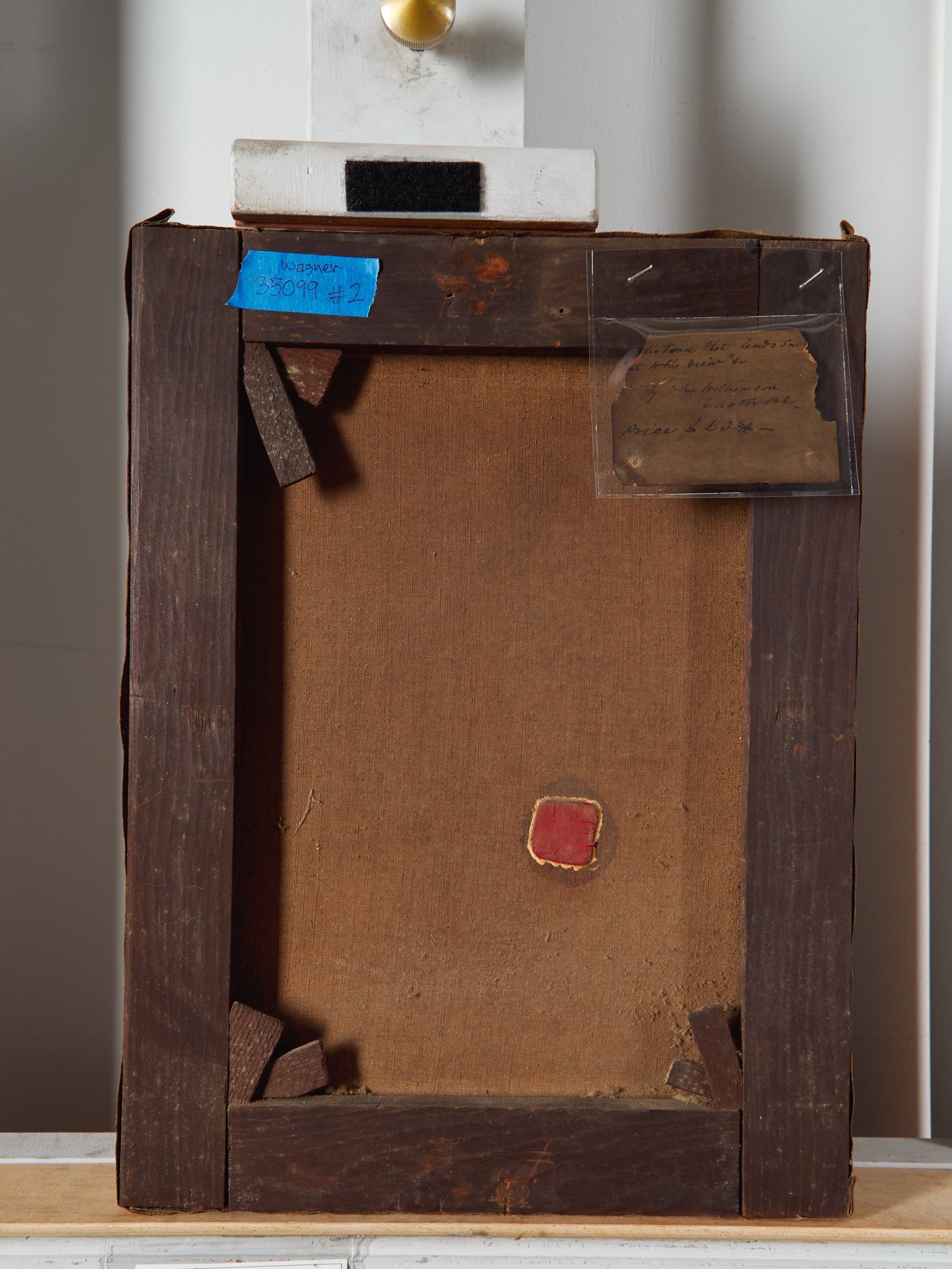"Father of the National Parks," John Muir famously said, "The mountains are calling, and I must go." Mountains call to so many. Adventurers hike mountains to commune with nature. Athletes climb mountains to test their skills and conquer the terrain. Artists paint mountains to capture the scope and majesty of their beauty. The mountain in this landscape painting looms large over a lake and valley, with a snowcapped summit. Unfortunately, the delicate details of this painting had languished with years of discoloration and damage.
Before painting conservation treatment, recto
Before painting conservation treatment, verso
Thankfully, the owner decided to have the painting examined by a conservator, and it arrived at The Conservation Center to be examined by Senior Paintings Conservator Amber Schabdach. The natural resin varnish was discolored, and there were areas of blanching in the varnish. The blanching was likely caused by water droplets that fell onto the surface of the painting. There was also a brown drop accretion along the left edge, a notable layer of surface grime, and evidence of soot on the surface.
Before treatment, unframed
Upon further examination, Amber discovered a 1" tear in the mountain that had been previously repaired. The previous repair effort did not meet current conservation standards, and a thick patch of rigid material, possibly paint, has transferred through to the front of the painting. Around the area of the tear repair, there were minor canvas deformations. There were also losses to the painting layer over the tear and along the bottom edge of the painting. The frame hid the paint losses along the bottom edge. Drying cracks were also noted in the lower right corner, but they appeared to be secure at the time of examination.
During treatment, featuring the cleaning line running vertically though the middle of the painting
Amber began treatment by consolidating the paint layer around the losses and any flaking areas before removing the previous tear repair. Once the tear repair was removed, the canvas was flattened as best as possible to remove the deformations. The tear repair was then addressed to meet current conservation standards. Once the structural issues were secure, the painting was surface cleaned to remove the grime and soot and reduce the accretions. The varnish layer was then removed with appropriate solvents, with dramatic results.
After treatment, under UV light
Areas of paint loss were filled and textured using appropriate conservation-grade fill material. Then Amber applied a layer of varnish to saturate the paint layer and isolate the original paint from the impainting that would be applied in the next step. Using reversible conservation paints, areas of loss and abrasion could be inpainted to integrate the areas of loss. Lastly, Amber applied a final coat of varnish to incorporate the surface gloss.
After painting conservation treatment
The frame was also surface cleaned before the painting was reinstalled using updated materials. A small, illegible label that was on the verso of the painting was encapsulated and attached to the back of the framing materials. Now completed, the lovely details of this painting are revived and can once again be admired and appreciated.
After treatment, reframed
After treatment, reframed








